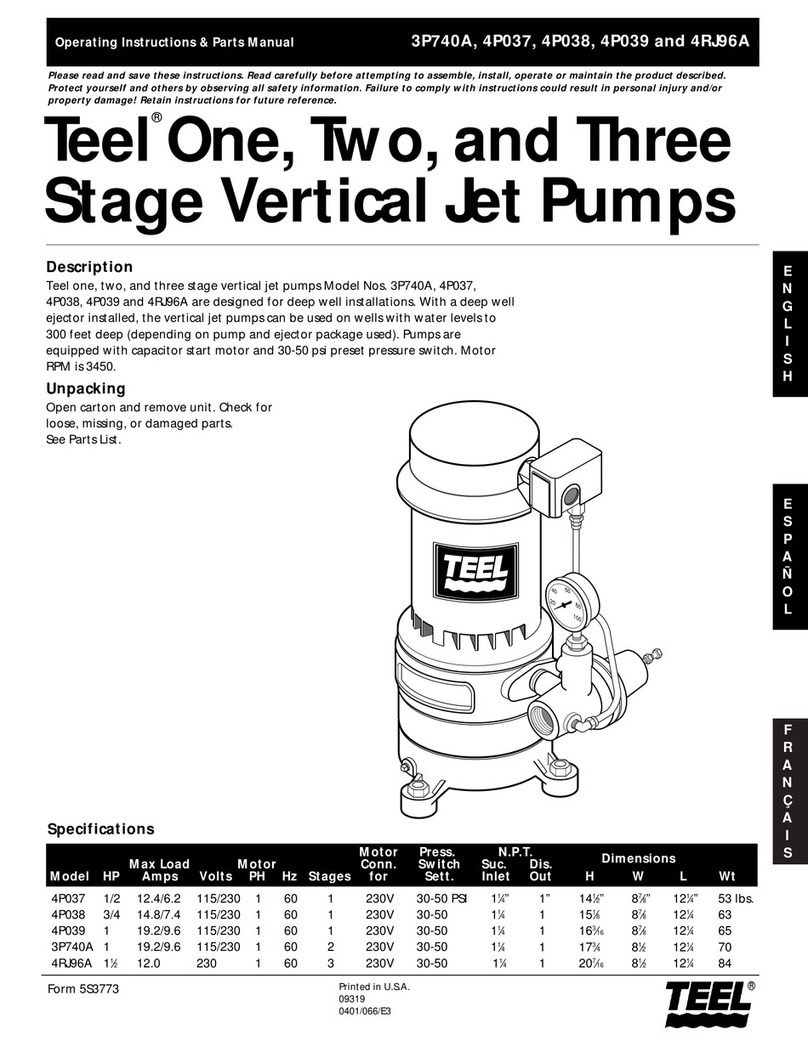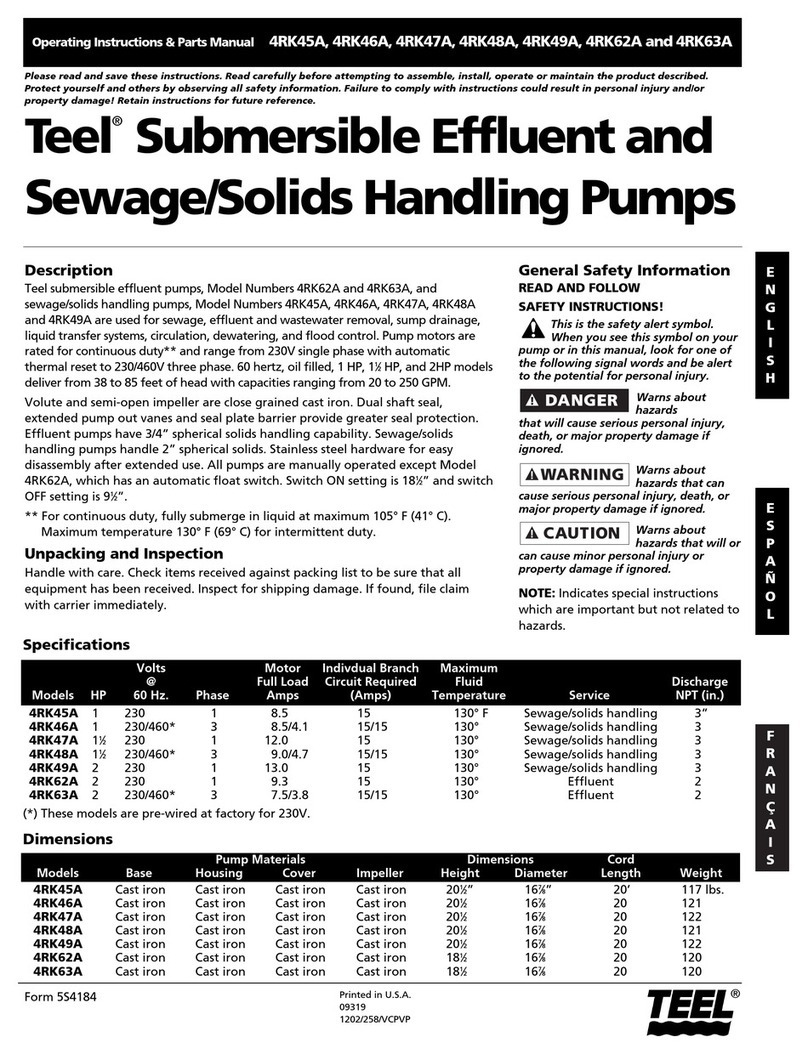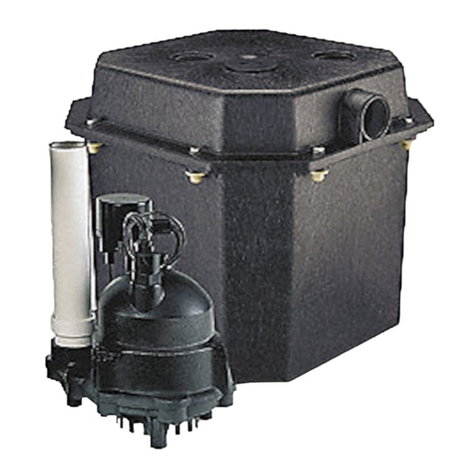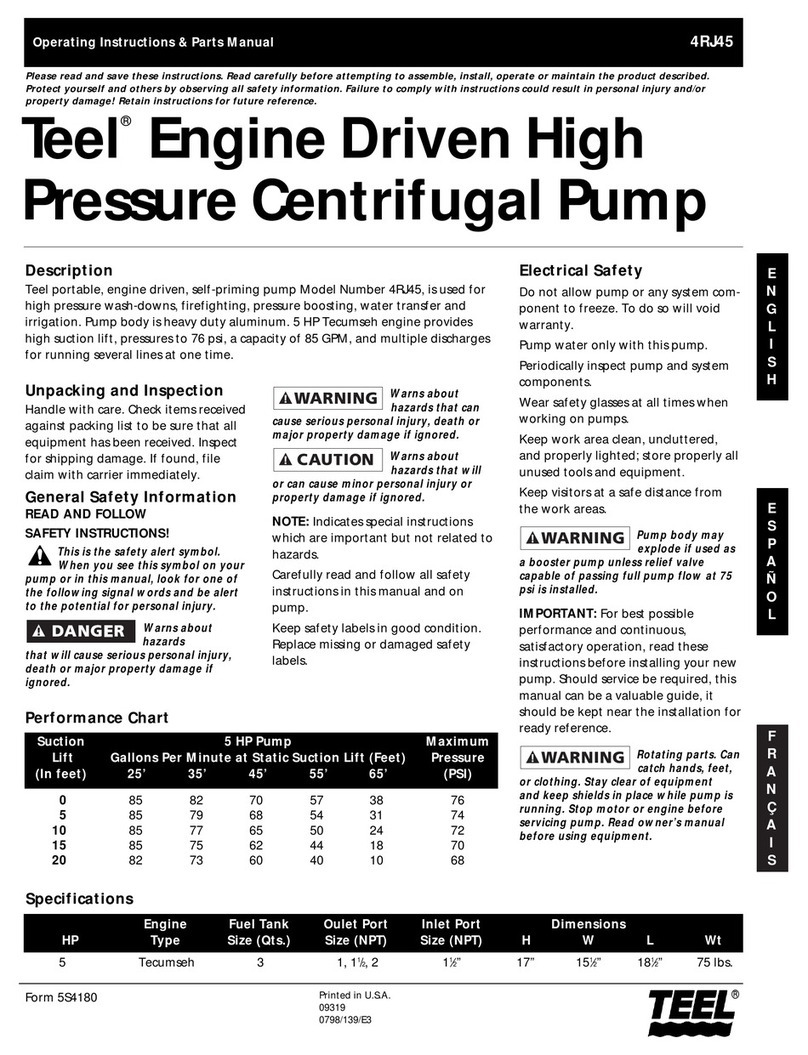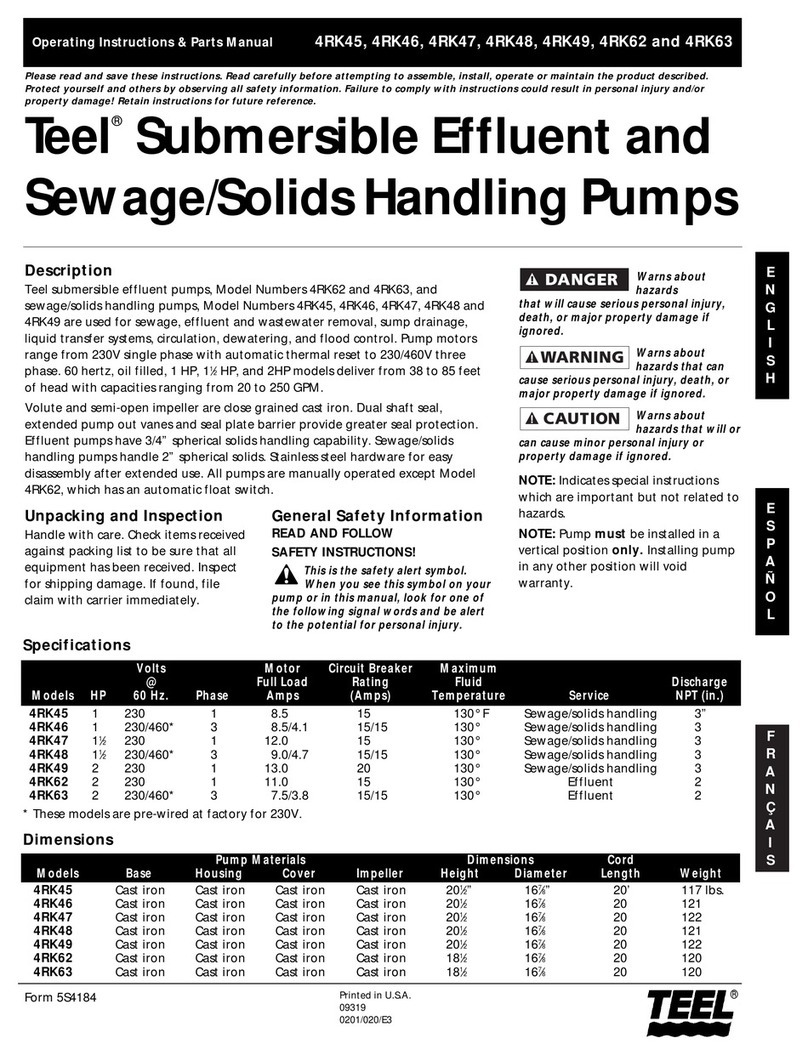General Safety Information
(Continued)
Install a good grounding bond
between disconnect box, control
box, and piping system. Tape cable
closely to discharge pipe at intervals
of ten feet or less.
13.NEVER leave control box, fused
disconnect switch, or pressure
control switch covers open (either
partially or completely) when not
being worked on by a competent
electrician or repairman.
14.Always use caution when operating
electrical controls in damp areas. If
possible, avoid all contact with
electrical equipment during thunder
storms or extreme damp conditions.
15.Install all electrical equipment in
protected area to prevent
mechanical damage which could
produce serious electrical shock
and/or equipment failure.
16.Pump is designed to pump water
only. Fire or explosion
hazard! Do not
pump flammable liquids such as gasoline,
fuel oil, kerosene, etc., with this pump.
Pump water only with this pump.
17.DO NOT handle pump with wet
hands or when standing in water as
fatal electrical shock could occur.
Disconnect main power supply
before handling pump for any
reason.
Preinstallation Risk of electrical
shock. Connect
motor ground wire to grounded metal
raceway system or power system ground.
Bond (ground) pump and all metal
components to building ground system in
accordance with National Electrical Code
(NEC) requirements.
Most submersible pump problems are
electrical. To reduce problems, have all
electrical hook-up work or service work
done by a qualified electrician or
serviceman only.
To save added expense and extra trips,
complete as many as possible of the
following procedures before going to
the installation site.
1. Examine pump for damage. Make
sure check valve works properly. For
3-wire units, motor and control box
horsepower and voltage must match
exactly.
NOTE: All units are supplied with extra
label for above ground pump
identification. Place label in
conspicuous location (on control box,
etc.) for future reference.
2. Check electrical supply for correct
fusing, wire size, transformer size,
and adequate grounding.
3. Follow wiring directions in the
control box and make momentary
tests to see that motor runs. If test is
satisfactory, proceed to Step 4 (cable
splice).
4. First check cable size against
Submersible Wire Size Charts
(below). Use extreme care; this is a
very important step. If required
length falls between two wire sizes,
use the larger wire size (smaller
number) of the two.
IMPORTANT: Use of wire sizes smaller
than those specified in charts will cause
low starting voltage, may cause early
pump failure and will void warranty.
Larger wire sizes may be used for better
economy of operation. Be sure voltage
at pressure switch or fuse box is
between the following limits:
• 115 Volts Rated – Between 105
and 125 Volts
• 230 Volts Rated – Between 210
and 250 Volts
5. Use butt connectors and plastic
sleeves included in the splice kit to
make underwater cable splices.
IMPORTANT: Do not handle motor or
pump by power cable or motor leads!
Damage to cable will result!
IMPORTANT: Follow instructions
carefully to make a watertight splice! A
leak in the splice can result in:
a. Damage to motor winding.
b. Electrolytic deterioration of the
joint, resulting in an open circuit.
4
Teel Operating Instructions and Parts Manual
Teel Deep Well Submersible Pumps
®
E
N
G
L
I
S
H
Wire Size Chart
1/3 115 130 210 340 540 840 1300
1/3 230 550 880 1390 2190 3400 5250
1/2 115 100 160 250 390 620 960
1/2 230 400 650 1020 1610 2510 3880
3/4 230 300 480 760 1200 1870 2890
1230 250 480 630 990 1540 2380
11⁄2230 190 310 480 770 1200 1870
Single Phase Submersible Pump Wire Size Chart
Pump to Power Source AWG Wire Size – Maximum Distance in Feet
HP Volts #14 #12 #10 #8 #6 #4
4P847A thru 4P851A, 4P852 thru 4P865, 4RH01 thru 4RH06,
4RG76 thru 4RG84, 4RG94 thru 4RG97 and 4RG99
















